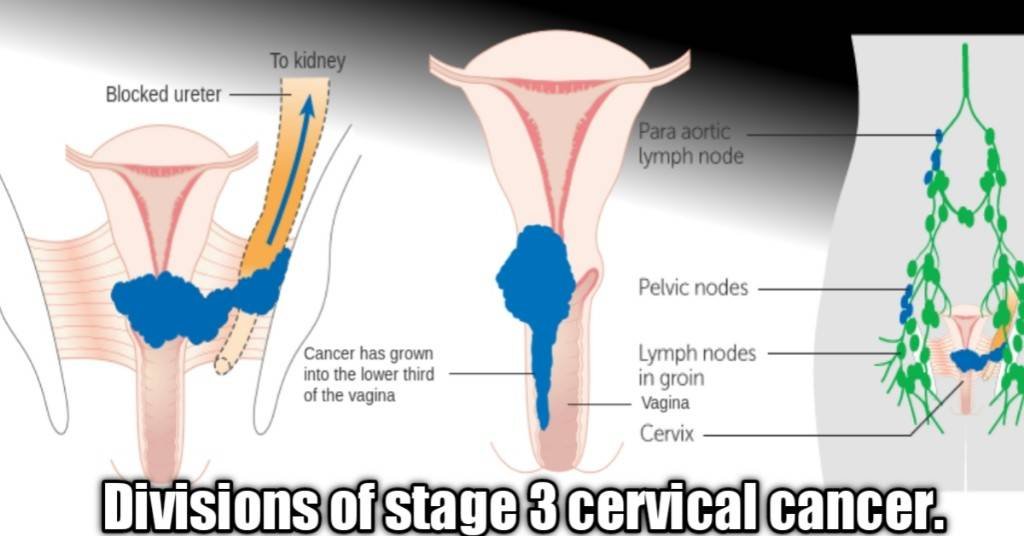
Table of Contents
Cervical cancer stage 3 falls in the class of what are known as locally advanced cervical cancers. It describes the stage where cancer has spread down to the lower third of the vagina, has reached the pelvic walls, and blocked the ureter(s), or spread to the lymph nodes up to the aorta.
It is discovered from abnormal pelvic examinations, pap smears, or certain symptoms known to characterize the presence of cervical cancer.
In this article, we’ll take a look at the divisions of stage 3 cervical cancer, symptoms, treatment, and life expectancy.
Risk factors of stage 3 cervical cancer.
These include similar factors that result in cervical cancer and specific scenarios that could help early-stage cancer deteriorate to locally advanced, stage 3 cancer. They are:
1. Untreated or ineffective treatment given at earlier stages like stages 1 and 2.
2. Not continuing with screenings after a previous diagnosis and treatment of cancer. Anyone who has been treated for cervical cancer could have a relapse which if not discovered timely enough may progress to stage 3.
3. Missed Vaccination or uncompleted vaccination. Most people get infected with the human papillomavirus at a point in their lifetime. Vaccinations prepare your body’s defenses to fight off the infection when it occurs and completing your doses as recommended is what gives you adequate protection.
4. Smoking. It increases your chances of coming down with cervical cancer following an infection. This is due to its negative effects such as reducing your immunity and interfering with healing and recovery.
5. Unprotected sex. The majority of HPV transmissions are via sex. Unprotected sex leaves you exposed to the virus.
6. Multiple sexual partners. Studies have shown the more lifetime sexual partners you have, the higher your chances of contracting the virus.
7. Existing sexually transmitted infection. People with sexually transmitted infections are known to be at higher risk.
8. Use of oral contraceptives. This increases your risk if used for a long time.
9. An HPV infection. HPV infections aren’t synonymous with cervical cancer as the body is usually able to fight off the virus within a year or two. However, in some cases, the infection could persist thereby paving the way for cancer.
10. Family history. For some reason, people with a family history of cervical cancer are at higher risk of coming down with the disease according to the American Cancer Society (ACS).
Other factors include:
11. Early first pregnancy.
12. Early first-time sex.
Stage 3 cervical cancer divisions or sub-stages.
Stage 3 cervical cancer is part of the group called locally advanced cervical cancer. This group covers stages 2B to 4A. There are three divisions of stage 3 cancer such as,
Stage 3A.
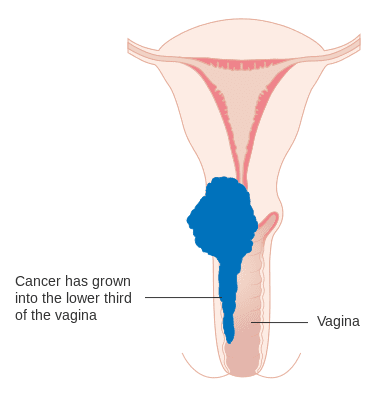
At this stage, cancer has spread to the lower third of the vagina as shown in the diagram above but hasn’t yet gotten to the pelvic walls.
Stage 3B.
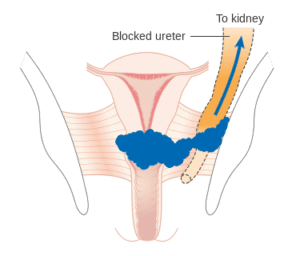
As shown in the diagram above, cancer at this stage has reached the pelvic walls and may cause kidney problems by blocking one of the two ureters via which urine drains from the kidneys into the bladder.
Stage 3C.
This stage signifies lymph node involvement. Depending on the lymph nodes cancer has reached, it’s divided into two.
Stage 3C1.

Describes the spread of cancer to nearby pelvic lymph nodes. As it spreads to more lymph nodes the nodes outside of the pelvic area become increasingly prone to being affected.
Stage 3C2.

The Diagram shows cancerous cells that have spread upwards to the para-aortic lymph nodes in the abdominal cavity. Image credit: Cancer Research, UK
At this stage, the cancerous cells have gone up to invade para-aortic lymph nodes within the abdominal cavity as shown in the diagram above.
Symptoms of stage 3.
Though the early stages of cervical cancer (stages 1A, 1B, and 2A ) may show no symptoms at all, stage 3 cancer is marked by the following symptoms:
- Hematuria (presence of blood in the urine)
- Pelvis pain during coitus and in the back.
- Bleeding during coitus.
- Difficulty passing urine or feces.
- Swelling in your legs.
It is common to diagnose stage 3 cervical cancer in patients presenting with some or all of these symptoms.
Stage 3 cervical cancer prevention.
The best option for any disease is prevention as the saying goes: “prevention is better than cure”. Avoiding coming in contact with the human papillomavirus or preparing your body for a possible encounter is key to staying safe from cervical cancer. Steps for your safety may involve:
- Vaccination,
- Regular screening exercises,
- The practice of safe sex by use of condoms,
- Keeping to one sexual partner who hasn’t been infected,
- Quit smoking,
- Avoiding early sex and early pregnancy,
- Keeping to your routine appointment with your doctor after being treated for early stages,
- Promptly report any symptoms that may come up in between your medical appointments.
H2. Treatment of stage 3 cervical cancer.
A couple of factors are the major deciders on the type of treatment that best suits you. These include the stage of cancer, type of cells involved, location of cancer, and any existing health conditions you may have.
Chemoradiation has been recognized as the standard treatment for stage 3 cervical cancer.1 This involves a combination of radiation therapy and chemotherapy.
External beam irradiation is given once daily, 5 times weekly for about 5 weeks. During the treatment, chemotherapy is given once weekly or after every 2 to 3 weeks. Your treatment course is then rounded off with internal beam radiation, called Brachytherapy according to Cancer Research, UK.
For once-weekly chemotherapy, Cisplatin may be the drug of choice for you, and for once every 3 weeks of chemo, cisplatin plus 5-fluorouracil may be administered.
3-dimensional conformal radiation therapy has been described which delivers targeted radiation specifically to the tumors in a way that spares surrounding tissues and organs from getting damaged by radiation according to the American Cancer Society (ACS).
Studies have shown surgery to be a viable option.
There may still be a need for radiotherapy post-surgery to destroy any remaining cancer cells that may have been missed as opined by the ACS and the European Journal of Cancer (EJC).2
Keep in touch by subscribing to our newsletter:
Prognosis and life expectancy.
Factors used in evaluating the best choices for your treatment also influence the prognosis and life expectancy. People do get completely cured even at stage 3. The earlier cervical cancer is detected and treated the higher the chances for a complete cure.
In other words, a cervical cancer diagnosis is never a death sentence.
Though quite a significant number of those whose cancer gets to stage 3 may not make it beyond 5 years from the date of diagnosis, it can only get better with new methods of treatment emerging from clinical trials.
According to Cancer Research, UK, more than 40% of sufferers live up to 5+ years from the date of initial diagnosis.
You may also want to find out about stage 4 cervical cancer.
References.
- Waggoner, S. E. (2003). Cervical cancer. The Lancet, 361(9376), 2217-2225. https://doi.org/10.1016/S0140-6736(03)13778-6 ↩︎
- Benedetti-Panici, P., Greggi, S., Scambia, G., Amoroso, M., Salerno, M., Maneschi, F., Cutillo, G., Paratore, M., Scorpiglione, N., & Mancuso, S. (1998). Long-term survival following neoadjuvant chemotherapy and radical surgery in locally advanced cervical cancer. European Journal of Cancer, 34(3), 341-346. https://doi.org/10.1016/S0959-8049(97)10029-6 ↩︎











































































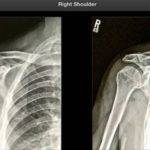




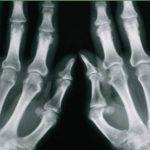
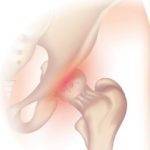
























































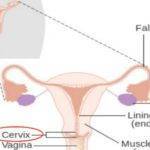


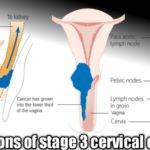
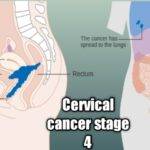








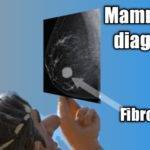


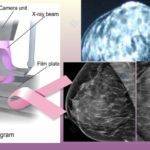




Thank you for the good writeup.
I genuinely enjoy reading through this website, it has good articles.